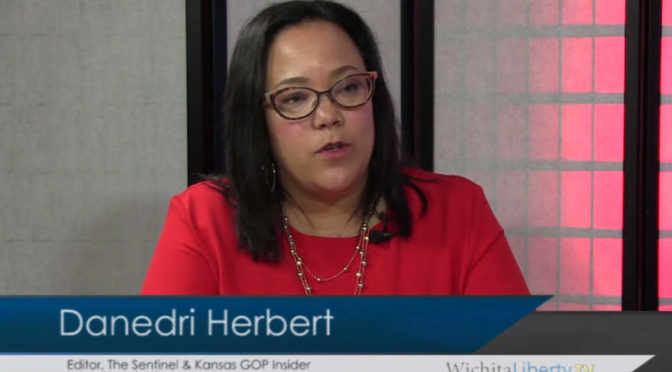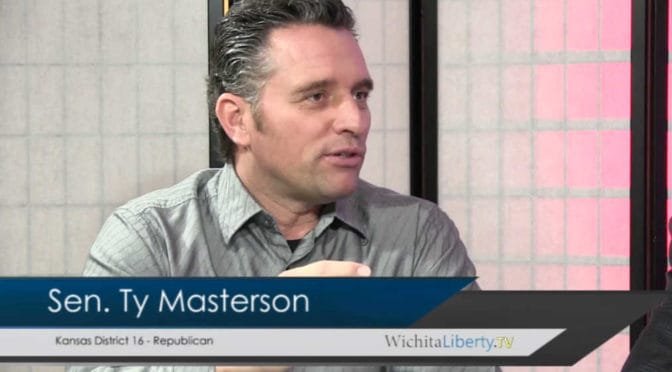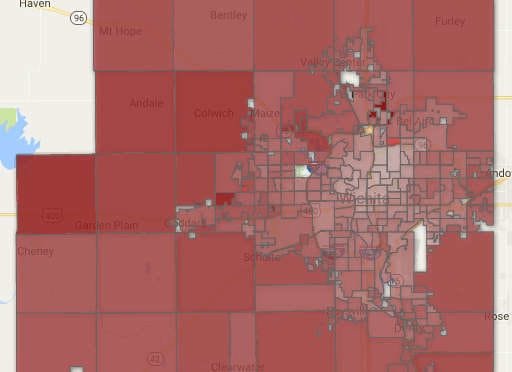Discussions of public policy need to start from a common base of facts and information. An episode shows that both our state government and news media are not helping.
A recent Hutchinson News article1 started with this:
Once you wake up to where Kansas was in 1992 at funding schools and what it needs to do to get caught up, said the Kansas Department of Education’s Deputy Commissioner Dale Dennis, it’s a shocker.
In 1992, base state aid per pupil was $3,600. That amount, taking into account the Consumer Price Index, would be the equivalent of $6,001.12 in 2013. Base state aid, however, has been frozen at $3,852 since 2014-15.
“The numbers are shocking, shocking,” Dennis told the Hutchinson Rotary Club at its Monday luncheon meeting at the Hutchinson Town Club.
Why is a speech by a government bureaucrat, as covered in a major newspaper, important? It illustrates two problems we face in understanding, discussing, and debating important matters of public policy.
First, can government be truthful and accurate? Dale Dennis — the state’s top official on school finance — certainly knows that the numbers he presented do not accurately characterize the totality of school spending in Kansas. But the problem is even worse than that. To use base state aid as the indicator of state spending on schools is deceptive. It’s deceptive in that, after adjusting for inflation, base state aid has declined. But total state aid to school districts has increased.
Base state aid is a false indicator of total spending on schools by the state. It’s fake — fake government. And for a newspaper to uncritically present this as news illustrates the second problem we face.
Background on base state aid and school spending

Base state aid, however, is not the only important number. To calculate the funding a school district receives, weightings are added. If students fall into certain categories, weightings for that category are added to determine a weighted enrollment. That is multiplied by base state aid to determine total state aid to the district. 4
While this may seem like a technical discussion that doesn’t make a difference, it’s very important, because some of the weightings are large. The at-risk weighting, intended to cover the additional costs of teaching students from low-income families, started at five percent in 1993. In other words, for every student in this category, a school district received an extra five percent of base state aid. The value of this weighting has risen by a factor of nine, reaching 45.6 percent starting with the 2008-2009 school year.
There’s also the high-density at-risk weighting. Starting with the 2006-2007 school year districts with a high concentration of at-risk students could receive an extra weighting of four percent or eight percent. Two years later the weightings were raised to six percent and ten percent. (This formula was revised again in 2012 in a way that may have slightly increased the weightings.)


Ten years later base state aid was $3,852 — almost exactly the same — and the at-risk weighting was up to 45.6 percent. This generates funding of $5,609. For a district that qualified for the maximum high-density at-risk weighting, an additional $404 in funding was generated. (These numbers are not adjusted for inflation.)
So even though base state aid remained (almost) unchanged, funding targeted at certain students rose, and by a large amount.
Over time, values for the various weightings grew until by 2014 they added 85 percent to base state aid. A nearby chart shows the growth of total state aid as compared to base state aid. (Starting in fiscal 2015 the state changed the way local tax dollars are counted. That accounts for the large rise for the last year of data in the chart. For school years 2016 and 2017, block grants have replaced the funding formula, so base aid and weightings do not apply in the same way.)
What have we learned?
We’re left wondering a few things:
- Did Deputy Superintendent Dale Dennis tell the audience that base state aid is just part of the school funding landscape, and not reflective of the big picture? Did he tell the audience that total state aid to schools has increased, and increased substantially? If so, why wasn’t it mentioned in the article?
- If Dale Dennis did not tell the audience these things, what conclusions should we draw about his truthfulness?
- Why didn’t the Hutchinson News article explain to readers that base state aid is not an accurate or total indicator of total state spending on schools?
- What is the duty of reporters and editors? We’re told that experienced journalists add background and context to the news — things that the average reader may not know. (This article is designated as “Editor’s Pick” by the Hutchinson News.)
By the way, the Wichita Eagle, on its opinion page, cited in a positive and uncritical manner the Hutchinson News article.5 This is notable as the writer of the Eagle piece, opinion editor Phillip Brownlee, was a certified public accountant in a previous career. This is someone we should be able to trust to delve into numbers and tell us what they mean. But that isn’t the case.
Whatever your opinion on the level and trend of school spending, we need to start the discussion from a common base of facts and information. From this episode, we see that both our state government and news media are not helping.
For another take on the problems with this episode, see Paul Waggoner’s column in the Hutchinson News.6 (If not able to access that link, try Shocking News about Kansas Education!)
—
Notes
- Clarkin, Mary. Department of Education’s Dennis: Shocking number when looking at funding gap. Hutchinson News. April 17, 2017. http://www.hutchnews.com/news/local_state_news/department-of-education-s-dennis-shocking-number-when-looking-at/article_4abe359e-8421-53f9-a8d7-1eaa56e95423.html. ↩
- Weeks, Bob. Kansas school weightings and effects on state aid. In making the case for more Kansas school spending, the focus on base state aid per pupil leaves out important considerations. https://wichitaliberty.org/wichita-kansas-schools/kansas-school-weightings-and-effects-on-state-aid/. ↩
- For the fiscal 2016 and 2017 school years, the formula was replaced by block grants. ↩
- AMENDMENTS TO THE 1992 SCHOOL DISTRICT FINANCE AND QUALITY PERFORMANCE ACT AND THE 1992 SCHOOL DISTRICT CAPITAL IMPROVEMENTS STATE AID PROGRAM (FINANCE FORMULA COMPONENTS), Kansas Legislative Research Department, May 20, 2014
http://ksde.org/Portals/0/School%20Finance/amends_to_sdfandqpa_2015.pdf ↩ - Brownlee, Philip. School funding numbers are ‘shocking.’ Wichita Eagle. April 22, 2017. http://www.kansas.com/opinion/opn-columns-blogs/now-consider-this/article146084839.html. ↩
- Waggoner, Paul. Shocking news about Kansas education. Hutchinson News. April 21, 2017. http://www.hutchnews.com/opinion/columnists/shocking-news-about-kansas-education/article_2ebea7d3-6659-51fc-b3b5-409d5b0aa243.html. Or, see http://wichitaliberty.org/kansas-government/shocking-news-kansas-education/. ↩











 A nearby table summarizes and compares the present policy with debt limits that would exist under the new policy, according to the Sedgwick County Financial Office. (There is an alternative interpretation of policy that if used, would limit borrowing in 2019 to $73,218,639.)
A nearby table summarizes and compares the present policy with debt limits that would exist under the new policy, according to the Sedgwick County Financial Office. (There is an alternative interpretation of policy that if used, would limit borrowing in 2019 to $73,218,639.)
